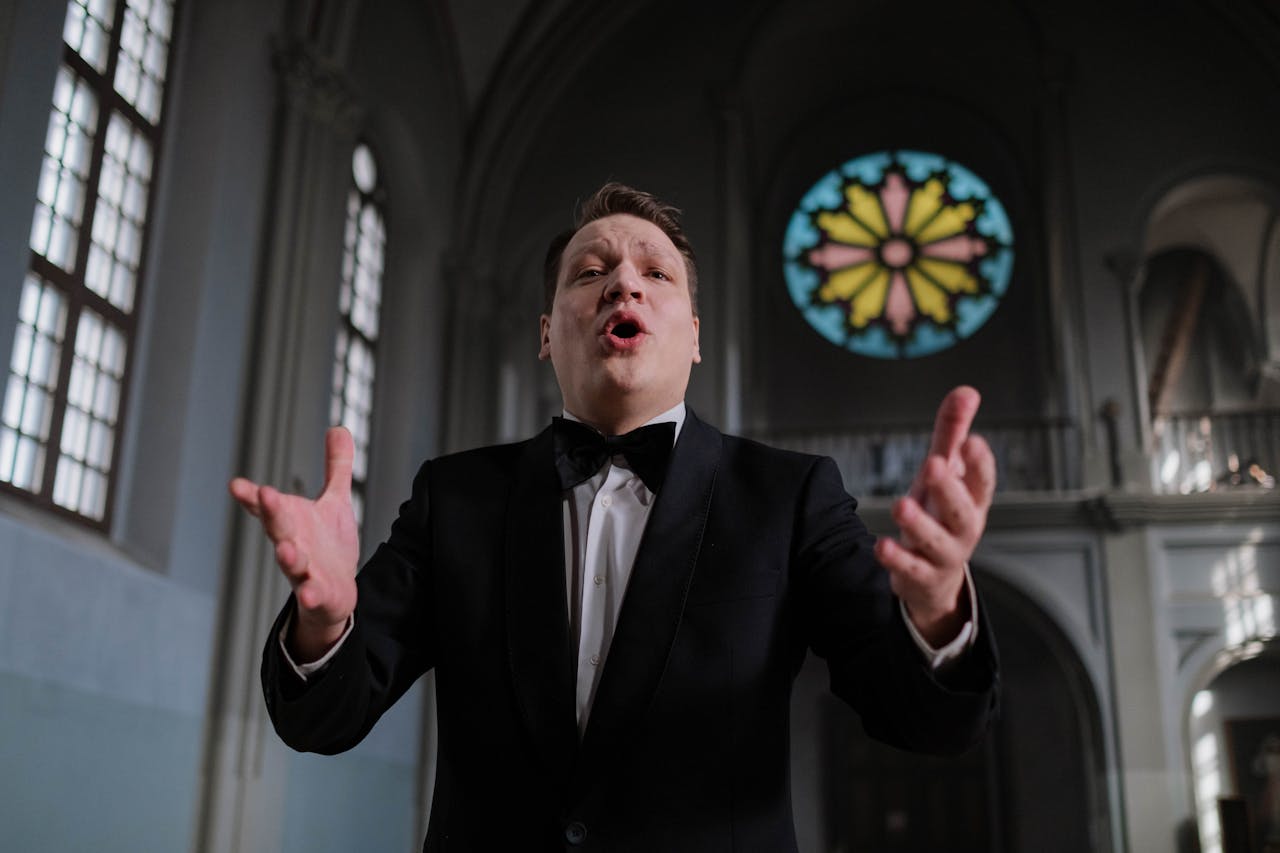The Great Romance Language Learning Showdown: Italian vs Spanish vs French
You're standing at the crossroads of linguistic destiny, passport in one hand, existential crisis in the other. Three beautiful Romance languages beckon to you but which one should you choose?
Posted By Love For Languages on 28-05-25
Picture this: You're standing at the crossroads of linguistic destiny, passport in one hand, existential crisis in the other (every story is better with drama right). Three beautiful Romance languages beckon to you like sirens of sophistication. But which one should you choose? Fear not, dear reader, we're about to settle this age-old debate once and for all, definitively, surely, right?
Choosing your first (or next) Romance language is like picking a vacation destination, a life partner, and a career path all rolled into one (again with the drama). No pressure, right? Whether you're dreaming of ordering gelato in perfect Italiano, negotiating business deals in flawless Française, or charming your way through Madrid in Español, each language offers its own unique blend of beauty, practicality, and inevitable pronunciation disasters.
Let's dive into the delicious details of this linguistic love triangle and help you find your perfect Romance language match.
The Numbers Game: Who's Got the Most Players?
While the amount of people speaking a language is maybe not always a good measure of how much you will enjoy learning a language, a language with global reach can definitely make the language more practical. So lets explore how many speakers each language has.
Spanish: The Popular Kid
With over 500 million speakers worldwide, Spanish is basically the social media influencer of Romance languages (but less annoying). It's spoken across 21 countries, meaning your language investment pays dividends from Madrid to Mexico City, from Buenos Aires to... well, basically everywhere except that one awkward family gathering where your cousin insists on speaking Klingon.
The Good:
Huge global presence, tons of practice opportunities, and you'll never lack for Spanish Netflix content (trust us, the telenovelas alone are worth the learning journey).
The Reality Check:
Everyone and their grandmother is learning Spanish, so you might not feel quite as special at parties.
French: The Sophisticated Diplomat
French speakers number around 280 million globally, but here's the kicker – French is an official language in 29 countries. It's like the James Bond of languages: smaller in numbers but with serious international clout (and deadly?).
The Good:
Opens doors in international business, diplomacy, and makes you sound instantly more sophisticated, even when ordering a croissant (kwah-sant).
The Reality Check:
Those nasal sounds weren't designed for human vocal cords, and don't get us started on the silent letters playing hide-and-seek in every sentence.
Italian: The Charming Artist
With about 65 million native speakers, Italian is the boutique option of our trio. Smaller, more exclusive, but oh-so-elegant. It's like choosing a handcrafted (Italian) leather bag over mass-produced alternatives.
The Good:
Incredibly expressive, relatively straightforward pronunciation, and let's be honest – everything sounds romantic in Italian, even "I need to do laundry. (Ho bisogno di fare il bucato)“
The Reality Check:
Limited geographic reach means fewer opportunities to practice, unless you plan on moving to Italy or befriending every Italian restaurant owner in your city.
The Learning Curve: Which One Won't Make You Cry (hint: all of them might)?
Spanish: The Golden Retriever of Languages
Spanish is famously beginner-friendly for English speakers. The pronunciation is refreshingly straightforward – what you see is generally what you get. No French silent letters playing pranks on you, no Italian double consonants that require operatic training to master.
Why Spanish is easier:
- Phonetic spelling (mostly)
- Familiar sentence structure
- Tons of cognates with English
- Forgiving pronunciation rules
The plot twist:
Those rolled R's will humble you faster than you can say "pero" (but you'll sound amazing once you master them).


French: The Beautiful Enigma
French has a reputation for being challenging, and honestly? It's earned it. But here's the secret: once you crack the code, French grammar is surprisingly logical. It's like solving an elegant puzzle designed by someone with a PhD in making things unnecessarily complicated.
The challenges:
- Nasal sounds that require nose yoga
- Silent letters everywhere (seriously, why is "beaucoup" pronounced "bo-coo"?)
- Gendered nouns with seemingly random assignments
The payoff:
French grammar, once mastered, is incredibly precise and expressive. Plus, you'll finally understand why French philosophy sounds so... French.
Italian: The Sweet Spot
Italian often feels like the Goldilocks choice – not too easy, not too hard, just right. The pronunciation is music to your ears (literally), and the grammar is complex enough to be interesting without being masochistic.
What makes Italian approachable:
- Melodic pronunciation that's fun to practice
- Clear vowel sounds
- Grammar that's logical once you get the hang of it
- Hand gestures are part of the curriculum (and who doesn't love expressive communication?)
The sweet surprise: Once you start speaking Italian, you'll discover you're naturally more expressive and animated – those hand gestures aren't optional, they're part of fluency. Plus, Italians will be so delighted that you're learning their "beautiful language" that they'll practically adopt you on the spot.

Career Opportunities: Which Language Pays the Bills?
Spanish: The Business Powerhouse
Spanish opens doors in international business, healthcare, education, and tourism. With Latin America's growing economic influence, Spanish speakers are increasingly valuable in global markets.
Hot career paths:
- International business and trade
- Healthcare (huge demand for Spanish-speaking medical professionals)
- Education and translation services
- Tourism and hospitality
French: The Diplomatic Ace
French remains the language of international diplomacy, luxury goods, and cultural industries. It's also huge in African markets – a fact many people overlook.
Career advantages:
- International organizations (UN, EU, OECD etc.)
- Luxury brand management
- International development and NGO work
- Culinary arts and hospitality
Italian: The Niche Specialist
While Italian has a smaller global footprint, it dominates in specific high-value industries.
Where Italian shines:
- Fashion and design
- Culinary arts and food industry
- Art history and cultural preservation
- Luxury goods and automotive industries
Cultural Immersion: Choose Your Adventure
Each language has it's own strengths. Lets explore the cultural benefits of each language.
Spanish: The Diversity Champion
Spanish culture spans continents and centuries. Want beach vibes? Spain's got you. Prefer mountain adventures? Hello, Peru! Craving urban sophistication? Buenos Aires is calling.
Cultural perks:
- Incredible diversity across Spanish-speaking countries
- Rich literary traditions (García Márquez, anyone?)
- Amazing food variety (tacos, paella, empanadas – need we say more?)
- Vibrant music scenes from flamenco to reggaeton
French: The Cultural Curator
French culture is synonymous with art, philosophy, cuisine, and that indefinable quality called "je ne sais quoi" (which, ironically, means "I don't know what”) and “Joie de vivre” (joy of living).
Why French culture captivates:
- World-renowned art and literature
- Culinary excellence that's practically a religion
- Fashion and luxury lifestyle
- Intellectual traditions and café philosophy sessions
Italian: The Life Enthusiast
Italian culture celebrates the art of living well – good food, beautiful surroundings, and passionate expression about everything from football to the proper way to make espresso.
Italian cultural highlights:
- Renaissance art and architecture everywhere
- Food culture that takes mealtime seriously
- Fashion and design leadership
- A lifestyle that prioritizes enjoying life (la dolce vita isn't just a saying)
The Learning Resources Reality Check
A language comparison guide is not complete without discussing the resources available to language learners to learn the language. So let's discuss the options available to you as a language learner

Spanish:
The Resource-Rich Option
Spanish learners are spoiled for choice. From Duolingo to Netflix's extensive Spanish catalog, from countless YouTube channels to an army of online tutors, Spanish learning resources are everywhere.
Abundance includes:
- Massive selection of movies, TV shows, and podcasts
- Countless language exchange partners
- Books, news, and online content for every level
- Story-based learning platforms (hint, hint) with engaging Spanish content
French:
The Quality Over Quantity Choice
French resources are plentiful and often high-quality, though perhaps not as overwhelming as Spanish options. But sometimes fewer options is better.
French learning perks:
- Excellent educational content and courses
- Rich literary tradition for advanced learners
- Quality news sources and cultural content
- Strong community of French learners worldwide
- Story-based learning platform (hint, hint) with engaging French content
Italian:
The Hidden Gem
Italian might have fewer resources than Spanish or French, but what exists is often passionate and high-quality. Plus, you'll find a tight-knit community of Italian learners who are genuinely excited to help each other.
Italian learning advantages:
- Passionate, supportive learning community
- Quality over quantity in educational materials
- Engaging cultural content (films, music, literature)
- Story-based approaches work particularly well (who would have thought) with Italian's narrative traditions
The Pronunciation Gauntlet
Spanish: The Confidence Builder
Spanish pronunciation is refreshingly straightforward. Once you master the rolled R, which may take anywhere from three days to three decades (not a guarantee), you're golden. The vowels are consistent, the stress patterns are logical, and you'll actually sound like you know what you're doing relatively quickly.
Spanish pronunciation pros:
- What you see is what you say
- Five clear vowel sounds (none of this French vowel chaos)
- Predictable stress patterns
- Forgiving of mistakes


French: The Beautiful Challenge
French pronunciation is like learning to play a musical instrument – difficult at first, but absolutely gorgeous once you get it right. Those nasal sounds might make you question your life choices initially, but they're the key to sounding authentically French.
French pronunciation reality:
- Nasal vowels that require nose gymnastics
- Silent letters playing an elaborate game of hide-and-seek
- Liaison rules that change how words connect
- The reward: you'll sound incredibly sophisticated
Italian: The Musical Journey
Italian pronunciation is pure music. It flows, it sings, it makes even grocery lists sound like poetry. The double consonants add emphasis and emotion, while the clear vowels make everything crystal clear.
Why Italian pronunciation rocks:
- Melodic and rhythmic
- Clear, distinct vowel sounds
- Double consonants that add character
- Hand gestures are part of the pronunciation (seriously!)

Grammar: The Plot Thickens
Spanish: The Logical Choice
Spanish grammar follows clear patterns and rules. Yes, there are exceptions (looking at you, irregular verbs), but the overall structure is logical and learnable.
Spanish grammar highlights:
- Consistent conjugation patterns
- Clear masculine/feminine noun system
- Subjunctive mood that actually makes sense
- Grammar that builds systematically
French: The Elegant Puzzle
French grammar is complex but beautifully precise. Once you understand the logic behind the rules, French allows for incredibly nuanced expression.
French grammar character:
- Precise and expressive
- Complex but logical verb system
- Agreement rules that matter
- Grammar that rewards patience and practice
Italian: The Expressive Medium
Italian grammar strikes a balance between complexity and accessibility. It's expressive enough to convey subtle emotions while remaining learnable for beginners.
Italian grammar strengths:
- Flexible word order for emphasis
- Rich verb conjugation system
- Grammar that supports expressive communication
- Rules that generally make intuitive sense
Real Student Stories: From the Trenches
Maria's Spanish Journey:
"I chose Spanish because I work in healthcare, and there's huge demand for bilingual medical professionals. Six months in, I was already helping Spanish-speaking patients feel more comfortable. Now I dream in Spanish – which is weird but oddly satisfying!"
Antoine's French Adventure:
"I picked French for my international business career. Yes, the pronunciation nearly broke me initially, but pushing through those nasal sounds was worth it. I landed a position with a French multinational, and my colleagues were impressed that I could actually pronounce 'développement durable' correctly. The story-based learning helped me understand French business culture, not just language."
Isabella's Italian Romance:
"I fell in love with Italian during a cooking class – yes, really! The instructor was Italian, and the way she described ingredients was pure poetry. I started learning through stories about Italian food culture, then expanded to art and history. Now I'm planning to spend a year in Tuscany. Italian taught me that language learning should be joyful, not just educational."
The Practical Decision Framework
Still torn? Here's your decision-making toolkit:
Choose Spanish if:
- You want maximum global applicability
- You prefer a gentler learning curve
- You're interested in diverse cultures across multiple continents
- You work in healthcare, education, or business with Latin American connections
- You want abundant learning resources and practice opportunities
Choose French if:
- You're drawn to international diplomacy or business
- You appreciate cultural sophistication and intellectual traditions
- You don't mind a steeper initial learning curve for long-term payoff
- You're interested in African markets and development work
- You love challenges and precision in language
Choose Italian if:
- You're passionate about art, design, food, or fashion
- You prefer a more intimate, community-focused learning experience
- You're drawn to expressive, musical language
- You plan to spend significant time in Italy
- You want to stand out with a more unique language skill
The Story-Based Advantage
Here's where things get interesting for language learners: regardless of which Romance language you choose, story-based learning accelerates your progress dramatically. Why? Because stories provide context, emotion, and cultural understanding that traditional grammar drills simply can't match.
While books are amazing for learning and further developing your language skills as an intermediate user, it’s very difficult to start reading at an intermediate level if you’re just learning a language. Our engaging stories are designed for levels A1 through B2 and are the bridge that prepares you for upper intermediate stories and beyond.
Why stories work for Romance languages:
- Cultural immersion: Stories naturally include cultural context and social situations
- Emotional connection: You remember language better when it's tied to characters and plots you care about
- Natural grammar: You absorb grammar patterns through context rather than memorization
- Practical vocabulary: Stories teach you words you'll actually use in real conversations
Whether you're following a Spanish protagonist through the markets of Mexico City, joining a French character navigating Parisian café culture, or experiencing Italian family traditions through narrative, stories make language learning stick.
Making Your Choice: The Final Verdict
Here's the truth: there's no wrong choice among these three beautiful languages. Spanish offers practical global reach, French provides international sophistication, and Italian delivers cultural richness and expressive beauty.
The best Romance language for you is the one that matches your goals, interests, and lifestyle. Consider where you want to travel, what career opportunities excite you, and which culture genuinely fascinates you.
**Pro tip:** Start with the language that makes you genuinely excited to learn. Passion trumps practicality every time when it comes to language learning success. Once you have (nearly) mastered one romance language it’s much easier to learn another.
Your Romance Language Journey Starts Now
Still can't decide? Why not start with short stories in each language and see which one captures your imagination? At Love For Languages, we believe that the best way to choose a language is to experience it in action through engaging, culturally rich stories. That’s why we have sample stories open to everyone not just registered users.
The most important step is the first one. So whether you're ready to roll your R's in Spanish, master those French nasal sounds, or sing your way through Italian pronunciation, your Romance language adventure awaits.
Ready to start your journey? Explore our collection of engaging stories in Spanish, French, and Italian – because the best way to learn a language is to fall in love with it, one story at a time.*
Back to <a href=":url">all blogs</a> blog/view.allBlogs
